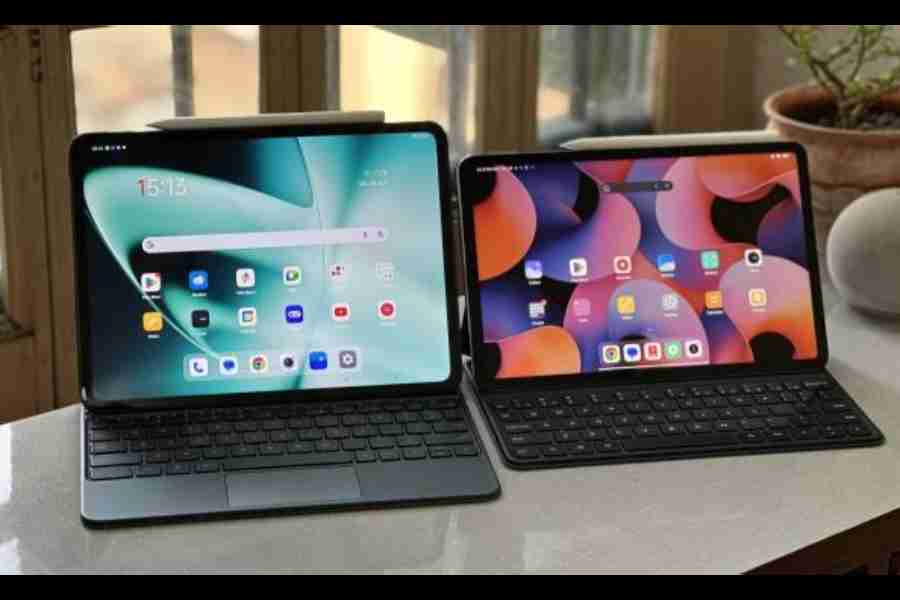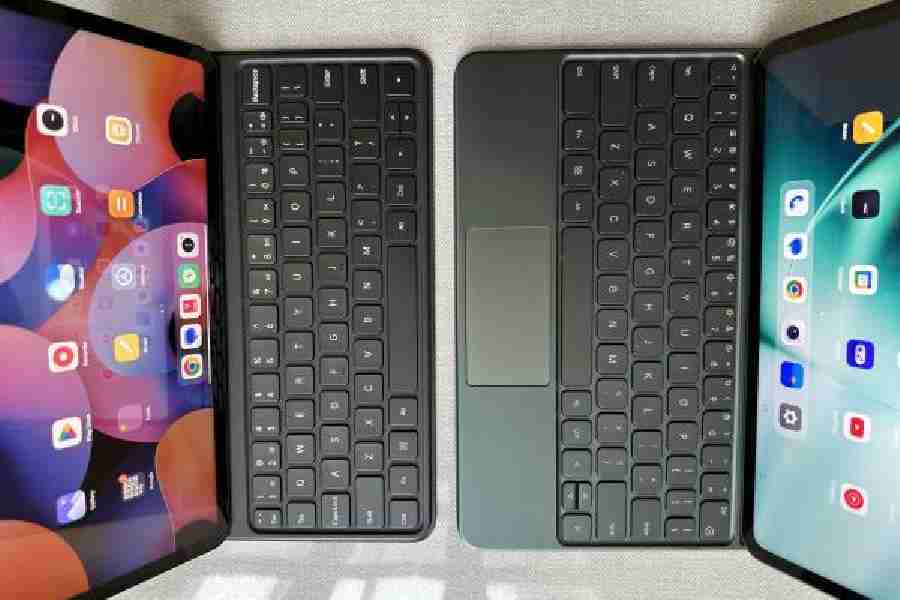Recently, two Android tablets have hit the market, each coming with its pros and cons. There is the Xiaomi Pad 6 and then there is OnePlus Pad. It’s obvious that Xiaomi has been presenting tablets for a few years now while for OnePlus, it’s a relatively new segment.
There are two questions. First, should you buy any of these Android tablets or head for something like the iPad (9th Generation)? The iPad’s biggest strength is the App Store where you will find all kinds of options for the many things you can do on the tablet. Android remains miles behind when it comes to software experience. As for hardware, buy an iPad today and you will end up using it for years because of the fantastic build. What you need to think about is whether you should add a keyboard and an Apple Pencil to the purchase because that will increase the pricing substantially.
Second, while buying an Android tablet, should you buy a keyboard and a stylus? Chances are you will need all the accessories and that adds to the pricing for the tablet. Keeping these in mind, let’s dive into the world of Xiaomi and OnePlus.
The tablet and….
You need to buy accessories separately. Both Xiaomi and OnePlus sell wireless keyboards and stylus. Pricing for the Xiaomi Pad 6 begins at Rs 26,999 (128GB+6GB). Add to this a Rs 4,999 keyboard and the Xiaomi Smart Pen (second generation) that’s priced Rs 5,999. OnePlus, on the other hand, sells its magnetic keyboard for Rs 7,999 and Stylo for Rs 4,999 while the Pad begins at Rs 37,999 (128GB+8GB). Adding up the pricing of all the accessories, Xiaomi definitely comes out on top.
If you ask about looks, both are good. If you ask about the build, both are good. But in the pricing department, Xiaomi wins. Where OnePlus scores points is the build quality of the keyboard, which has a trackpad and the feel of the keys is better.
Display, audio and more
In the display department, things get interesting. OnePlus has a taller aspect ratio, which is helpful while working on productivity apps like Photoshop because you have more screen space to play around with. Xiaomi’s screen is also pretty good but more suitable for watching content. When it comes to brightness and display quality, both go toe to toe and you can’t go wrong.
In the audio department, OnePlus has a slight advantage because of the fuller sound the speakers produce. Remember, you are paying more for the OnePlus tablet and so better hardware in there.
Let’s stay with hardware. Both machines come with Type-C connectivity. So dig deeper. On the OnePlus machine, there is USB 2.0 while on the Xiaomi tablet it’s 3.2. It will make a difference. You can connect a 4K display to the Xiaomi tablet and the data transfer speed is higher. It’s a small difference that may matter.
Quality of accessories
The OnePlus keyboard, as I said earlier, wins because of the trackpad and the overall typing experience. The Xiaomi keyboard is narrow and it’s challenging to balance it when the machine is placed on the lap. But Xiaomi has an advantage in the stylus department. The new Smart Pen comes with two buttons and it can be used for various functions on the tablet. The tip is also quite responsive. OnePlus has a simpler stylus. Yet, compared to Apple Pencil, both are way behind in terms of usage and hardware quality.
Software experience
Both companies are trying to give an integrated software experience, that is, better connectivity with their other devices. Xiaomi has done a better job or is slightly ahead at the moment. You can easily put two apps side by side on the Xiaomi tablet and the floating window does its job well. OnePlus needs to work in the software department because it doesn’t match the smoothness one feels while using most OnePlus phones.
Performance is….
What do you exactly want from the tablet? Xiaomi is using Snapdragon 870 chipset while OnePlus is using a more powerful one — MediaTek Dimensity 9000. Working on everyday tasks will not be very different on the two tablets but in the gaming department, OnePlus has an advantage. Plus, the OnePlus processor is powerful enough to make the tablet stay relevant for a longer time.
Should you buy it?
We haven’t spoken about battery life. Xiaomi is offering 8840mAh battery while OnePlus, 9510mAh. Further, the OnePlus tablet charges faster. Frankly, both the tablets have enough power to last you an entire day. Overall, if you consider where Android stands with its app offering for tablets, Apple’s App Store makes far more sense. Yet, if you want to cling to Android, Xiaomi has an advantage over OnePlus, be it in pricing or overall performance. At the same time, remember OnePlus will keep on making tablets and those — whenever they arrive — will take care of the chinks in the software department.
Mathures Pau
At a glance
Advantage Xiaomi Pad 6
Cost of the tablet combined with accessories is lower
Xiaomi Smart Pen (second generation) is more powerful
More software customisation for the tablet
USB-C offers better data transfer speeds
Advantage OnePlus Pad
Taller screen aspect ratio means a better viewing experience for productivity apps
Superior processor
Better keyboard (needs to be bought separately)
Clean software experience







